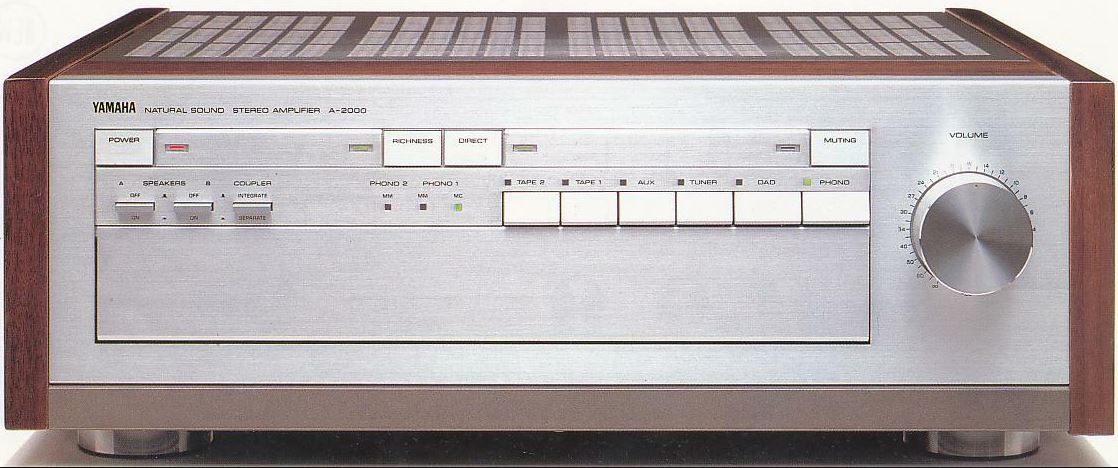Yamaha A-2000 je stereo integrovaný zosilňovač vyrábaný v 80-tych rokov 20-teho storočia. Išlo o najvyšší model výrobcu. V roku 1985 nahradil pôvodnú verziu A-2000 model s označením A-2000A.
Rok výroby: 1983 - 1987
Cena:
Predchodca: A-9
Nástupca: Yamaha AX-2000 (1987-1993)
Technické parametre
| Integrated Amplifier | A-2000 |
| Direct Input Switch | Yes |
| Minimum RMS Output Power 8Ω, (20Hz ~ 20kHz) |
130 W + 130 W |
| Total Harmonic Distortion | 0.003 % |
| Damping Factor (1kHz, 8Ω) | 200 |
| Signal-to-Noise Ratio (MC, MM, CD) | 83 / 88 / 106 dB |
| Richness Control | + 7.5dB, 30Hz |
| Rec Out Selector | Yes |
| Dimensions (W x H x D) | 473 x 169 x 464 mm |
| Weight | 26 kg |
Info from Yamaha.com:
The Yamaha No. 2000 that gave up its status as flagship to the A-9 with its near-modern look (released in 1979), was clearly back in 1983 as the A-2000 new-generation model with its audio-like appearance and huge material resources. The traditional Class A/B switchover feature was finally abolished, and in its place what could be said to be Yamaha’s final answer to the high efficiency Class A competition of the past few years, the "Dual Amp Class A" with ZDR 150W + 150W (6Ω rated output, 0.003% THD) high efficiency Class A amp was used. A Class A amp and a Class A/B amp were operated in parallel and both were connected to the load (speakers), with negative feedback from the load applied to the Class A amp only, so that the Class A amp completely controlled the load current and the Class A/B amp handled all the power dissipation with high efficiency. It was the realization of the audio amp dream of using pure Class A operation in all operating regions and was a great advance. Two huge EI power transformers (the larger one for the Class A amp and the smaller one for the Class A/B) were employed, and the block aluminum electrolytic capacitors had a capacity of 55,000 μF×2 for each channel, a total of 220,000 μF. The view after removing the top cover was just that of a separate amp, and the unit massed a big 26kg. Also, a new feature that stood out was the Richness loudness-like equalizer circuit that expanded the speakers’ frequency response by an octave at the low end and had a three-position selector for the Yamaha representative speaker models NS-2000 and NS-1000M, and a third generic position. The front panel had a lineup of flat pushbuttons and a sealing panel, and the walnut cabinet with polyurethane finish was the same as that used by Yamaha’s high end grand pianos and was a good fit for the popular conservative trend. The A-2000 did not have the bold looks of the CA-1000 and A-9, but on the other hand Yamaha was no longer playing catch up, but was in front, and the marketplace itself was reaching maturity, so these factors were no doubt reflected in the design.



